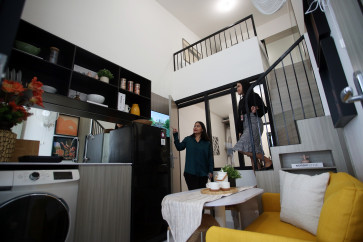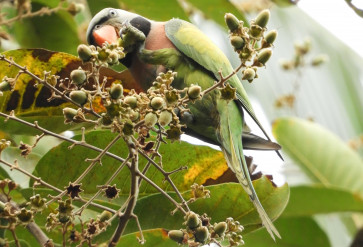Popular Reads
Top Results
Can't find what you're looking for?
View all search resultsPopular Reads
Top Results
Can't find what you're looking for?
View all search resultsBetween Amsterdam and Bali
Paul Husner first visited Sanur in 1985
Change text size
Gift Premium Articles
to Anyone

P
aul Husner first visited Sanur in 1985. He came back in 1996 and stayed there for quite some time. During his stay, he spent many hours observing the works of the late Belgium painter Le Mayeur displayed in a rustic museum just a couple meters away from the shoreline. He loved Le Mayeur’s esthetic interpretation of the island.
“I fell in love with Sanur because of its light, be it the light in the garden, the light on the coming waves, or the subtle arrangement of light that clears up the sky and enables me to see the majestic Mount Agung in that far, far away place. That’s why I decided to stay and work in Sanur,” he said.
Husner owns another house in Sanggingan, Ubud, and a place that also offers a unique atmosphere. However, it was the light of Sanur that lured him back to the seaside village and enticed him to express his artistic longing for it on canvas.
Born in 1942 in Basel, Switzerland, Husner divides his time between Amsterdam and Bali.
He studied painting and graphic art at the renowned Gerrit Rietveld academy, and has received countless awards, such as the Urio Prijs (1969), the Willink van Collen Prize (1971), the Jeanne Bieruma Oosting Prize (1974), and Arti Medaille (1987).
In Indonesia he has held several solo exhibitions, at Erasmus Huis, Jakarta, (1996), Cemara 6 (1997), Maxima Gallery (2000), Canna Gallery (2003) and Ganesha Gallery (2003).
He is an expressive painter, who recreates the world around him, adding his own interpretations to its shapes and colors. Natural light is a critical element in his works.
“The first thing I do is observe, then I may sketch first before painting, or I may directly go to painting from observing. I am not a naturalist painter so I do not duplicate what I see in the world around me. Instead, I recreate it,” he said.
Nature, and everything she has to offer, only acts as a starting point in Husner’s creative process. The beauty he creates stems from his own imagination and interpretation.
“After I select a place that will be the object of my painting, I will need a considerable amount of time to analyze the specific components of that place, the distinctive quality of its light, and draw a mental image of how I would interpret that place into a composition of space and color on canvas,” he said.
Husner explained his aesthetic philosophy is heavily influenced by German philosopher Arthur Schopenhauer.
“In the creative process the most important thing is forgetting. Forget the concept or idea of what makes a thing a good thing, forget the concept or idea of what makes a thing a bad thing. I liberate myself from all pre-conceptions, including comments about my previous paintings. Only by doing so can I acquire a new set of ‘eyes’ to see the object and to create a new painting,” he added.









